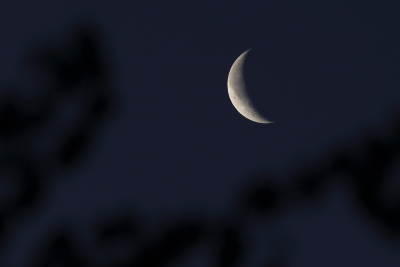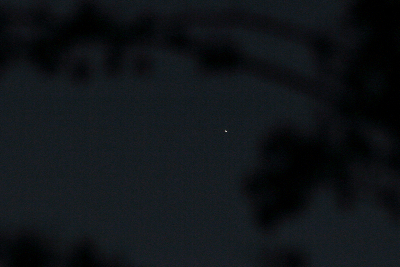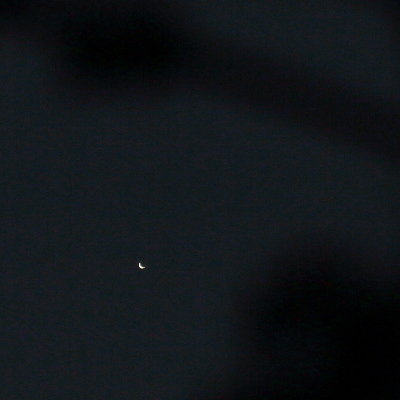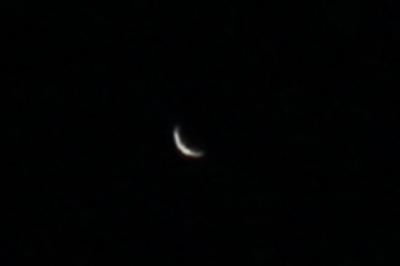
This crescent Moon photo was taken a few days ago in the pre-dawn skies over Tualatin.
The next shot, captured near the same time with exactly the same magnification, is Venus -- the Morning Star with its signature bright diamond brilliance:

Okay, Venus looks like nothing more than an ordinary white pixel in the photo above. Here it is again, zoomed up to approximately what you'd see with a pair of good binoculars. Now the crescent shape of Venus is nicely visible:

As the magnification increases further, it becomes clear how very thin the Venusian crescent is right now:

How could that thin slice of planet be so dazzlingly bright? Click here for a good explanation of Venus phases, including why it is actually brightest when the crescent is very narrow.
